|
Peintures
SEX IN ART
10 January 2007
|
Cet article se compose de 3 pages.
 1
2
3
1
2
3

| |
|


|
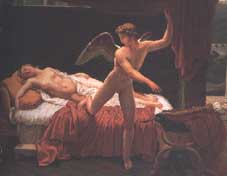
François-Edouard Picot
(French)
(1786-1868) |

Robert Lefèvre
(French)
(1755-1830) |
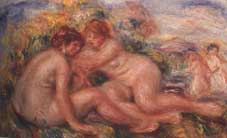
Pierre-Auguste Renoir |
| The 18th Century was really a period of libertinage that gave artists more freedom regarding the themes they were tackling. A clear example of such apparent licentious times can be found in the production of erotic scenes hidden in boxes and watches, which lasted until the early 19th Century.
The golden years of sex in art only covered a century or so until the bourgeois society came to impose its own moral rules, which were almost identical with those enacted by the Church during the Middle Age period. Artists had again to brave censorship to produce lustful images and the first photographers active during Victorian times simply faced prison when they issued sexy photos.
The first artist who had the courage to break these rules was Gustave Courbet who painted the most incredible painting ever thought of, "The origin of the World", representing the womb of a woman, that of his mistress, and exposing her pubic hair and vagina. This masterpiece was painted for a rich Turkish patron, whose education and way of thinking had little to do with the general European attitudes of the 1870s. |

Edgar Degas |
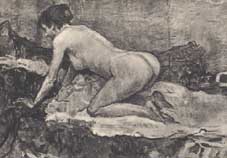
Henri de Toulouse-Lautrec |
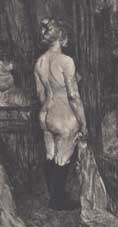
Henri de Toulouse-Lautrec |
| This painting was later acquired by a French collector who thought preferable to hide it behind a sliding panel on which had been painted a much decent work. It ended up in the collection of a famous psychiatrist who however seldom cared to show it to close friends before it was acquired by the Orsay Museum where the public can now admire it.
We thus had to wait until the end of the 20th Century to have the privilege of seeing such a work of this kind in a museum and such fact demonstrates that it took the world a long time to get rid of rigid and stupid taboos.
During the 19th Century many painters had however tried to by-pass moral rules in producing what we may call permissive works, notably Corot, Ingres, Toulouse-Lautrec and several other academic artists but they always had to be careful about the themes they were choosing in order not to shock the public.
Years later, an artist like Picasso was much attracted by sex themes and produced numerous suggestive or lustful works. Still, there are not many artists who followed in his footpath and certainly not more than a few dozens, including Schiele, Klimt, Grosz, Pascin, Balthus, Rodin, Camille Claudel, Delvaux, Warhol or John Kacere who are worth to be mentioned nowadays.
As a conclusion, sex somewhat remains in some way a forbidden theme, a kind of barrier that provokes sheer hesitation when it comes to represent it and most artists do not have the will or the courage to go beyond was is acceptable in the eyes of the public and even in theirs. Adrian Darmon |
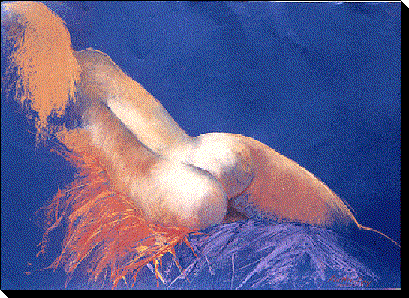
Sue Seidler-May |

Sue Seidler-May |
|
|
|
|